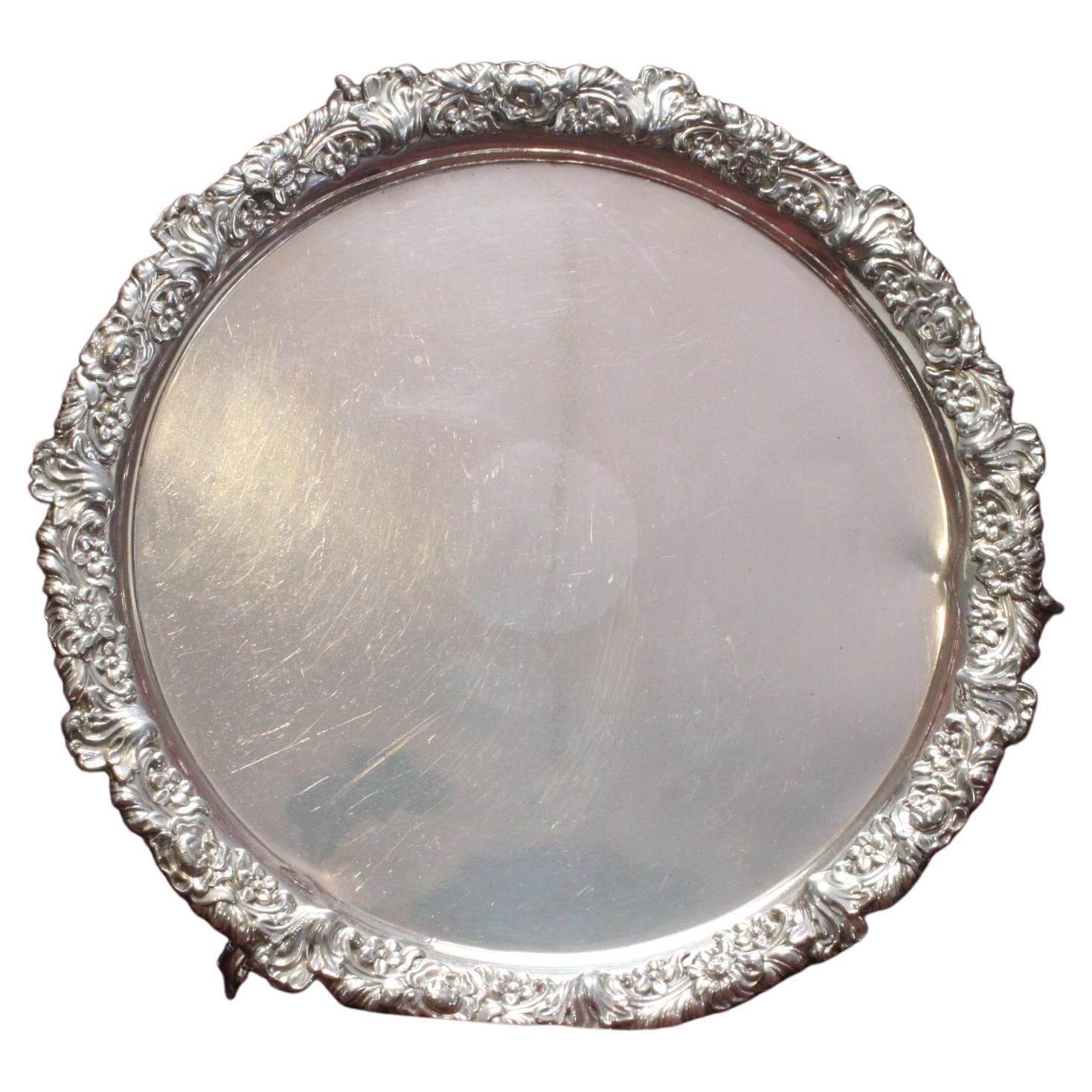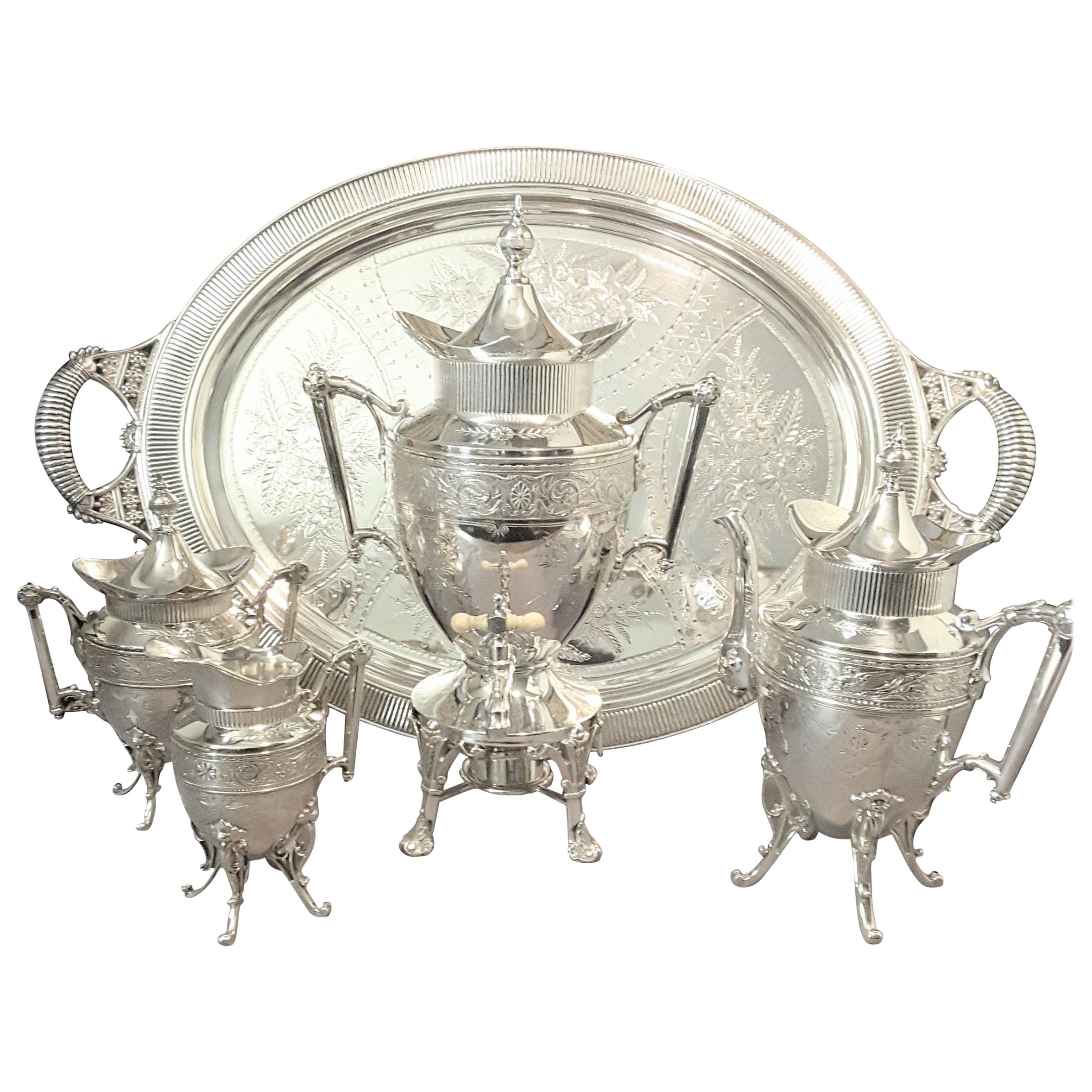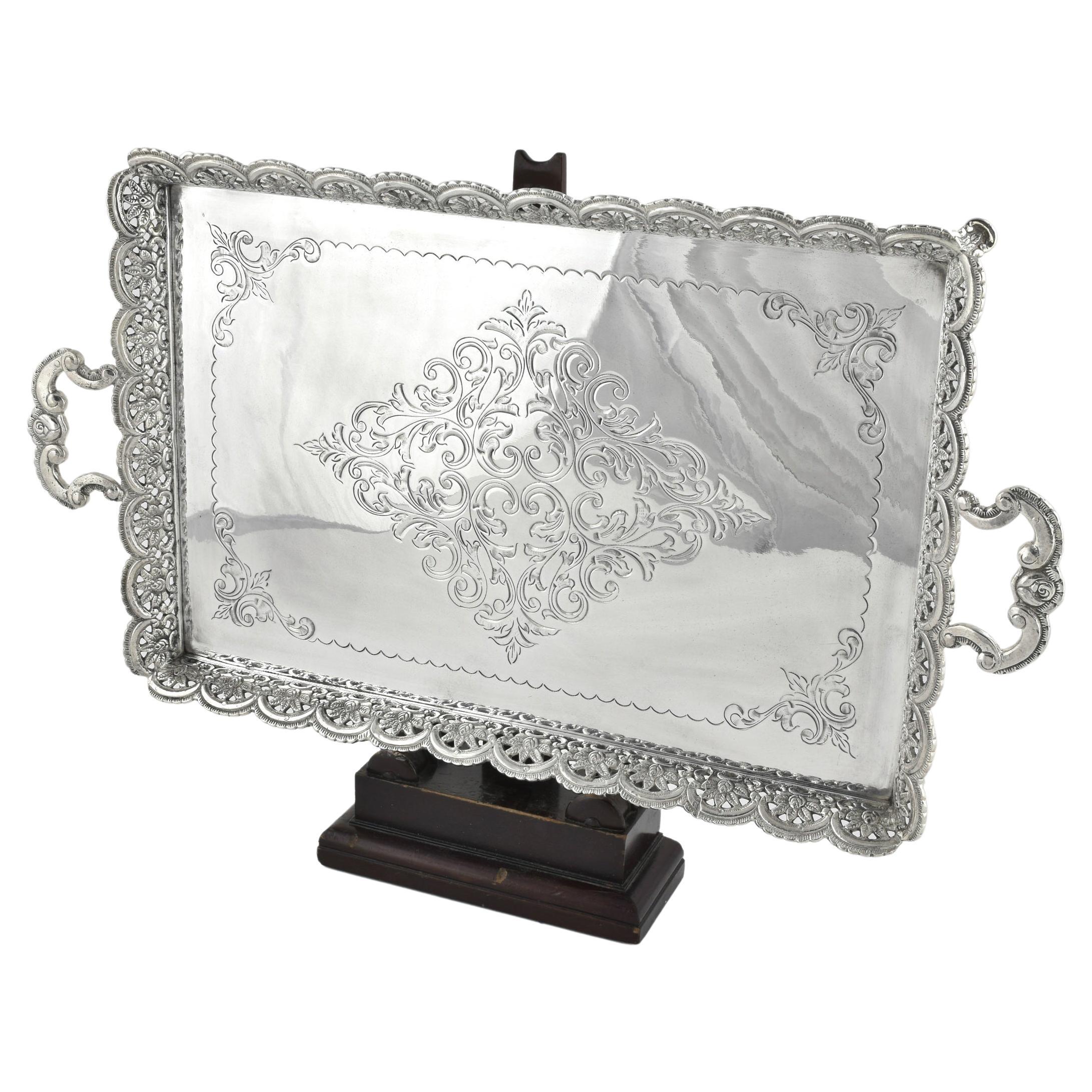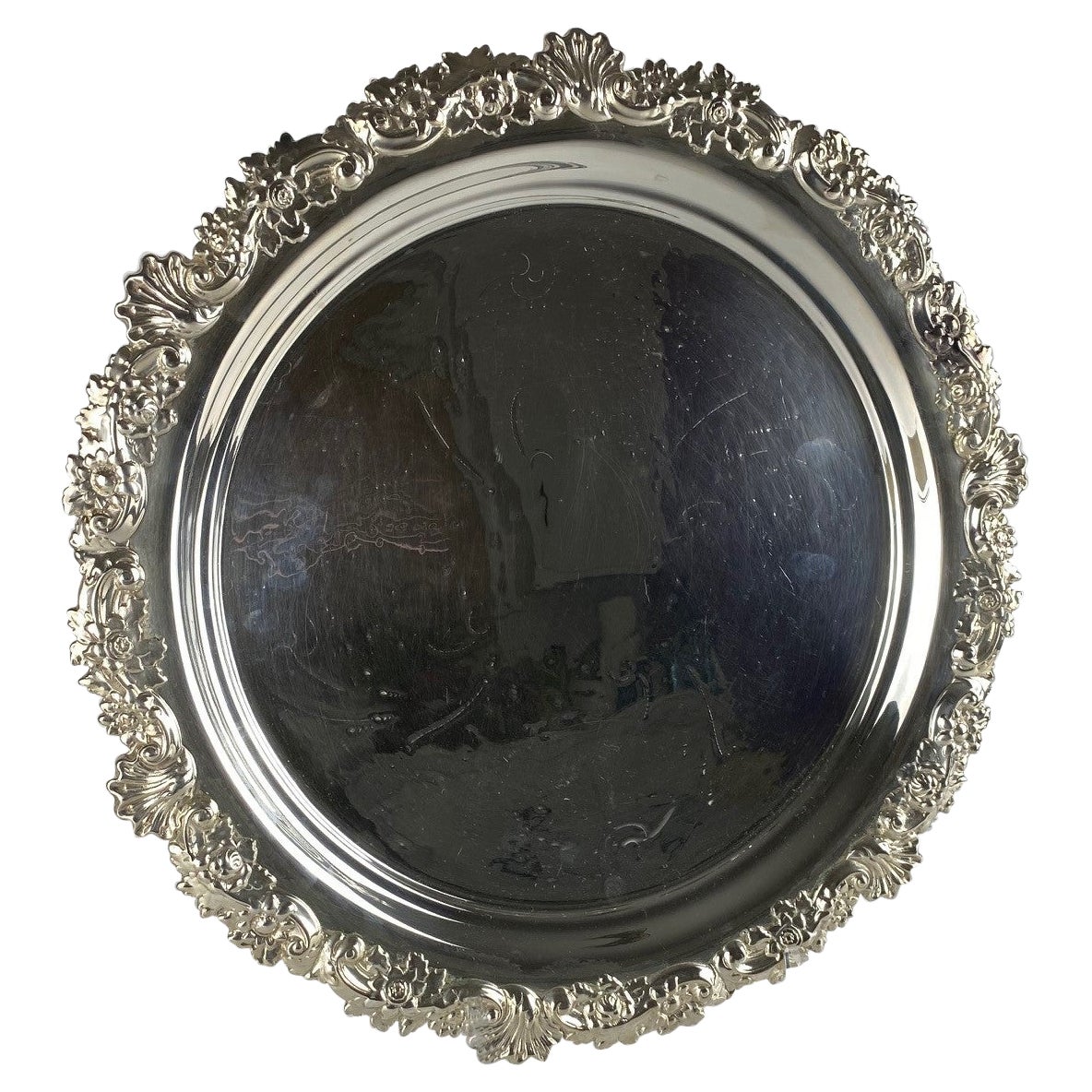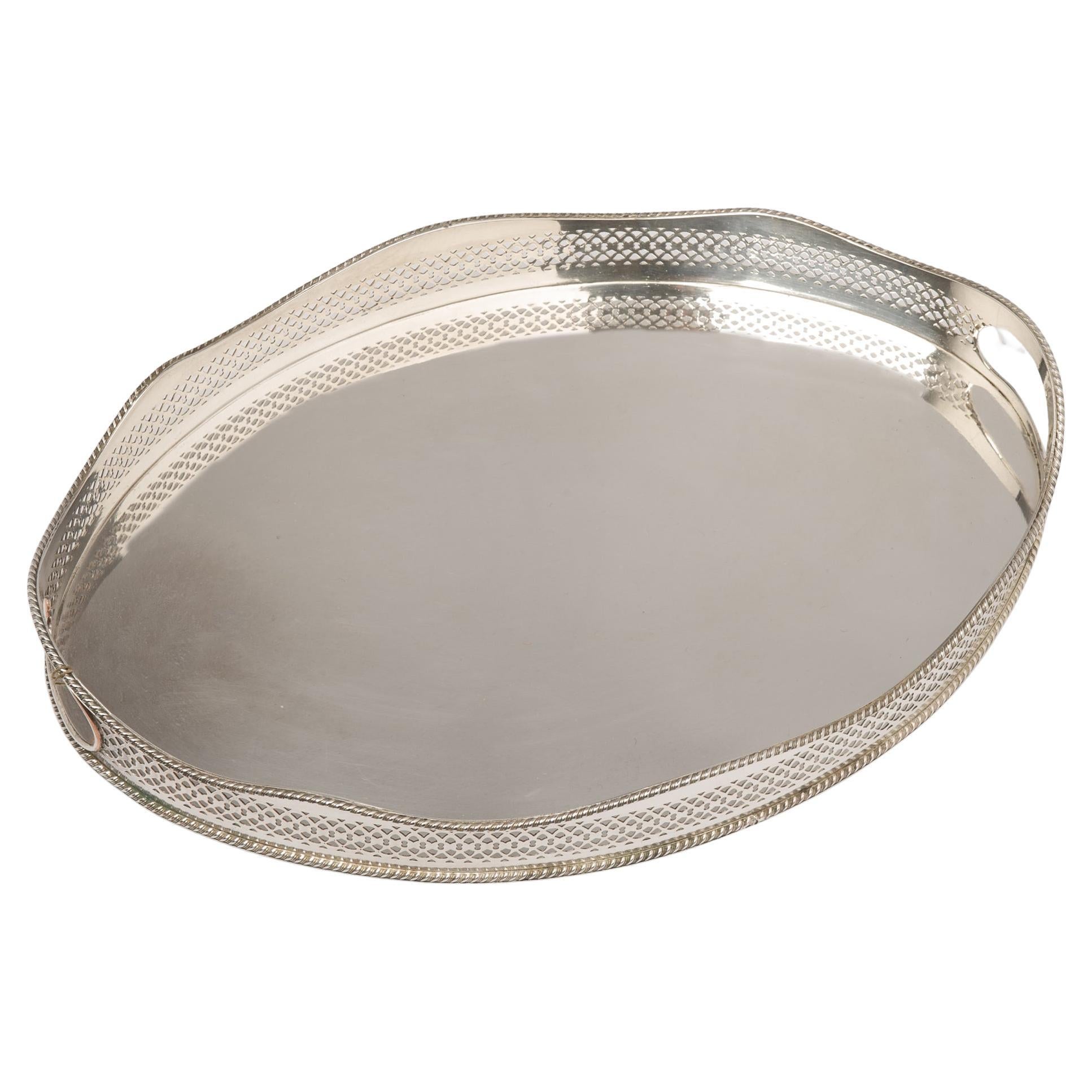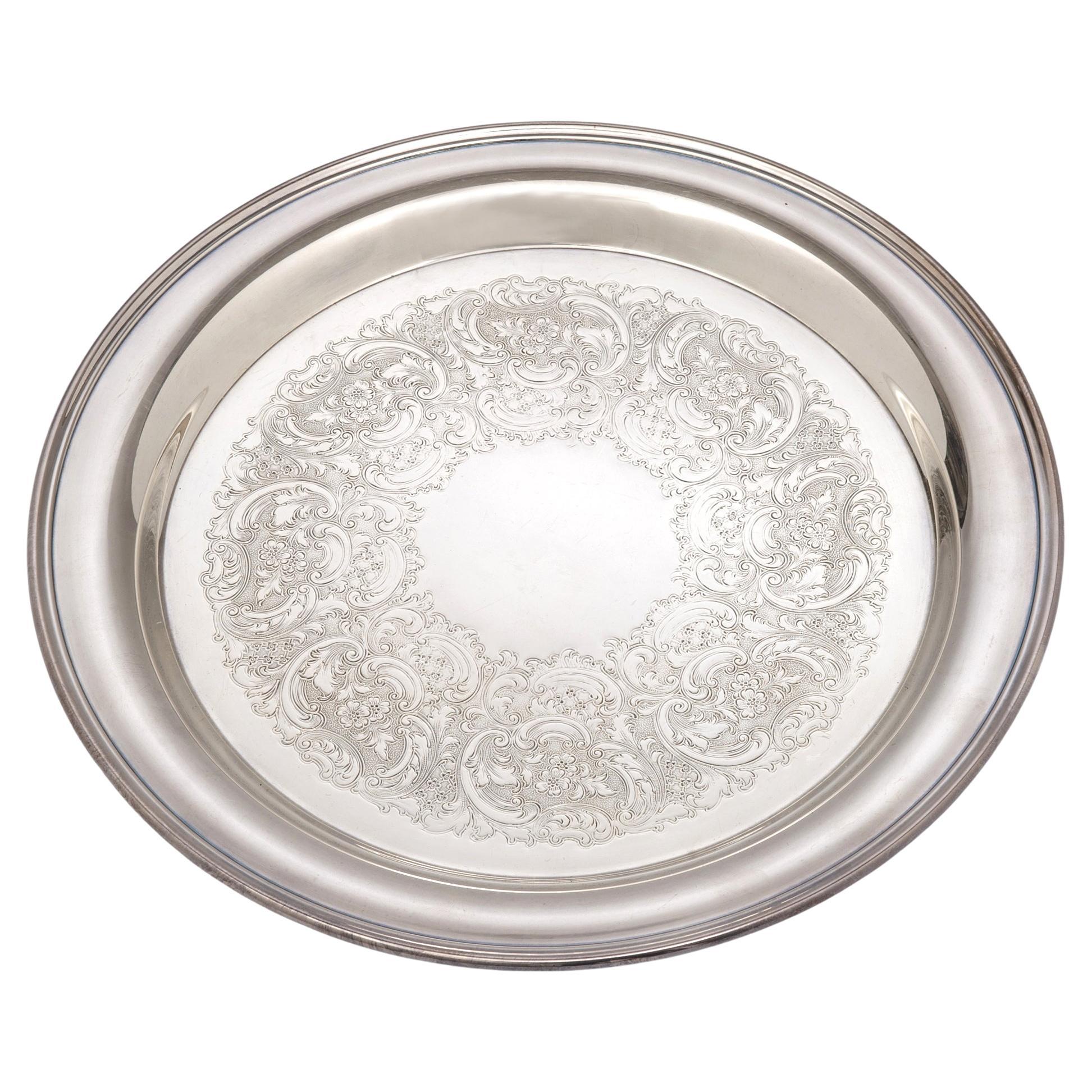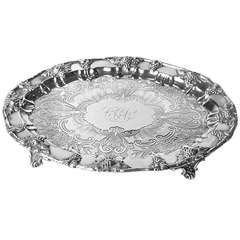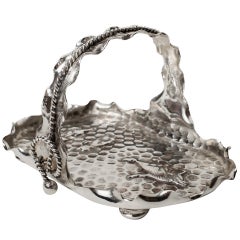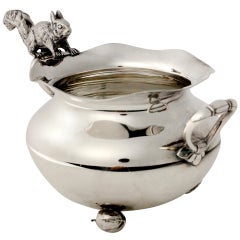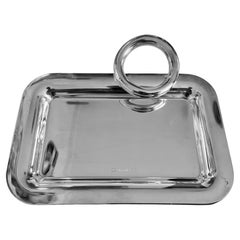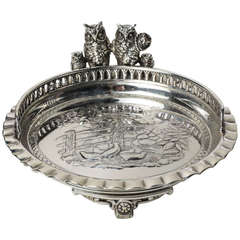
Owl Calling Card Tray
View Similar Items
Want more images or videos?
Request additional images or videos from the seller
1 of 6
Owl Calling Card Tray
About the Item
- Creator:Simpson, Hall, Miller & Co. (Maker)
- Dimensions:Height: 3.5 in (8.89 cm)Width: 7 in (17.78 cm)Depth: 7 in (17.78 cm)
- Place of Origin:
- Period:
- Date of Manufacture:20th Century
- Condition:
- Seller Location:New York, NY
- Reference Number:Seller: AGTTL41471stDibs: LU84381087010
About the Seller
5.0
Vetted Seller
These experienced sellers undergo a comprehensive evaluation by our team of in-house experts.
1stDibs seller since 2008
123 sales on 1stDibs
Typical response time: 12 hours
More From This SellerView All
- Sheffield Silver TrayLocated in New York, NYOval flower pattern silver salver tray with embossed grape pattern border. Raised on scroll shaped feet. Sheffield silver, circa 1845.Category
Antique 19th Century English Sheffield and Silverplate
$1,385 - Hammered Silver Plate BasketBy Meriden Silver Plate Co.Located in New York, NYSmall vintage hammered silver plate basket with a nursery theme depicting two children and two geese. Charming oval shape with scalloped edges, the handle with a twisted rope pattern, raised on small ball feet. Hallmarked: Meriden silver plate...Category
20th Century American Folk Art Sheffield and Silverplate
MaterialsSilver
- Silver Plate Nut DishBy James W. TuftsLocated in New York, NYRound silver plate nut dish with scalloped edge and small squirrel perched on side branch. James W. Tufts, Boston, "Plate Guaranteed", 1883.Category
Antique 19th Century American Sheffield and Silverplate
MaterialsSilver Plate
- Silverplate Hunting DogLocated in New York, NYExtraordinary large silver plate over spelter hunting dog. This rare in size decorative dog, over two feet in length, has excellent detail and resembles a Brittany spaniel...Category
20th Century Animal Sculptures
MaterialsSilver Plate
$5,550 - Sheffield TrayBy Sheffield Silver Co.Located in New York, NYSmall round engraved old Sheffield serving tray with embossed leaf and flower border and decorative raised feet. The centre medallion with c...Category
Antique 19th Century English Platters and Serveware
$750 - Round Silver TrayBy Eric VinerLocated in New York, NYRound sterling silver tray with scalloped edges resting on scrolled feet. Hallmarked "Eric Viner, Sheffield 1930."Category
20th Century English Platters and Serveware
$1,850
You May Also Like
- Christofle business card trayBy Andree PutmanLocated in 'S-HERTOGENBOSCH, NLChristofle business card tray in silver-plate. Designer: Andrée Putman. This piece is bought on Barbados at the famous hotel Farmont Royal Pavilion. See the inscription, picture numb...Category
1990s French Modern Sheffield and Silverplate
MaterialsSilver Plate
- Old Sheffield Plate Card TrayLocated in East Geelong, VICThis Old Sheffield Plate card tray measures 220 mm (8.75 inches) in diameter and stands 30 mm (1.25 inches) high. The edge of the tray which is dec...Category
Antique 1820s English Georgian Sheffield and Silverplate
MaterialsSheffield Plate
- Antique WMF Silver Plated Sweets / Visiting Card / Key/ Tray Early 20th CenturyLocated in London, GBThis is a beautiful WMF Art Nouveau silver plated visiting card tray Circa 1900 in date. Depicting a female figure in a long, flowing diaphanous dress, the train forming the double sided tray, with the impressed maker's mark and stamped '169' to underside. This exquisite casket could house anything from trinkets, keys, sweets to jewellery. Whatever you choose to use this item for you are sure to do it in style. Condition: In excellent condition with no dings, dents or signs of repair. Please see photos for confirmation. Dimensions in cm: Height 22 x Width 34.5 x Depth 16.5 Dimensions in inches: Height 9 inches x Width 1 foot, 2 inches x Depth 6 inches WMF In 1853, Daniel Straub, a miller from Geislingen, joined forces with the Schweizer Brothers to form the "Metallwarenfabrik Straub & Schweizer" in Geislingen. This was the second company to be founded by Straub - previously in 1850, from the nucleus of a small repair workshop, which he had set up to work on the construction of Geislingen's famous railway incline, he had founded Maschinenfabrik Geislingen. This company was involved mainly in manufacturing mill turbines and traded throughout Europe. As early as 1862, the young company distinguished itself by winning a gold medal at the World Exhibition in London. In 1866, following the departure of the brothers Louis and Friedrich Schweizer, the company was renamed Straub & Sohn" (Straub & Son). The company showroom, built in 1868 in Berlin, gradually evolved to become the company's first retail outlet. Three years later, the company was already employing 60 workers. By 1880, the number of employees had grown to approximately 200 and the company was already producing 960 different items. 1880 saw the merger between Straub & Sohn and "Ritter & Co.", Esslingen, to form a public limited company under the name of Wurttembergische Metallwarenfabrik. At the time of the merger, Ritter & Co.'s Esslingen factory was already using the electroplating method of silver plating and had the more modern production facilities at its disposal. Straub's company, on the other hand, was the more profitable of the two. 1892 saw the development of a special technique for silver plating cutlery, whereby the silver is distributed in a way that, at the points of the cutlery most exposed to wear and tear, the coating is twice as thick as elsewhere. This process was patented and is still in use today. Known nowadays as 'Perfect Hard Silver plating' the technique remains exclusive to WMF. Under Carl Hugele the company gained international standing. At the turn of the century the factory in Geislingen employed 3,000 workers. By 1910, this number had already grown to 4,000, making WMF the largest company in Wurttemberg at this time. Sales catalogues were printed in twelve languages. Subsidiary companies in London, Warsaw and Vienna opened up export markets. Under the direction of Albert Mayer the WMF studio was influenced by the art nouveau style. The product range was modernized and considerably extended. In 1905 WMF acquired a majority holding of the Cologne company Orivit AG, which manufactured products from "Orivit", a tin alloy. As of 1925, products created by the Contemporary Decorative Products Department (NKA) made their debut on the market. This department was set up under the direction of Hugo Debach in order to establish the name of WMF amongst consumers interested in art and design. This department was responsible for producing the special "Ikora" finish, which has earned an important place in the annals of art history. The "Ikora" brand name referred to a specific method of treating the surface of the metal, by which layers of coating were applied in a partly chemical and partly heat induced process. A host of newly developed hand-finishing techniques enhanced the possibilities for adding decorative flourishes to the products. Despite being mass produced, every item looked as if it had been individually crafted. At the end of the war the company had lost its foreign assets, associated factories...Category
Antique Early 1900s German Art Nouveau Sheffield and Silverplate
MaterialsSilver Plate
- Exquisite Aesthetic Movement Silverplated Tea Service by Simpson, Hall & MillerBy Simpson, Hall, Miller & Co.Located in Ottawa, OntarioExquisite Aesthetic Movement Silverplated Tea Service by Simpson, Hall & Miller Co. circa 1870-1890, large scale set consisting of a hot water ...Category
Antique Late 19th Century American Aesthetic Movement Tea Sets
MaterialsSilver Plate
- Rectangular Silverplated TrayLocated in Brescia, ITThis modern and timeless tray is perfect to serve coffee or tea. It is very elegant to show a crystal glasses collection or the barware pieces.Category
21st Century and Contemporary French Modern Serving Pieces
MaterialsSilver Plate
- Perforated metal trayBy Mathieu MatégotLocated in PARIS, FRPerforated black lacquered metal tray in the style of French designer Mathieu Matégot, from the 1960s. In perfect condition. DV361Category
Mid-20th Century French Sheffield and Silverplate
MaterialsMetal
Recently Viewed
View AllMore Ways To Browse
Vintage Card Tray
Quadruple Plate
Silver Card Tray
Sheffield Silver Small Tray
Calling Card Vintage
Silver Calling Card
Quadruple Silver Plate
Simpson Hall Miller Co
Owl Tray
Vintage Barnyard
Calling Card Tray
Used Furniture Sheffield
Used Kitchen Sheffield
Silverplated Serveware
Antique Furniture Sheffield
Sheffield England
Antique Sheffield Silver
Antique Silverplate


